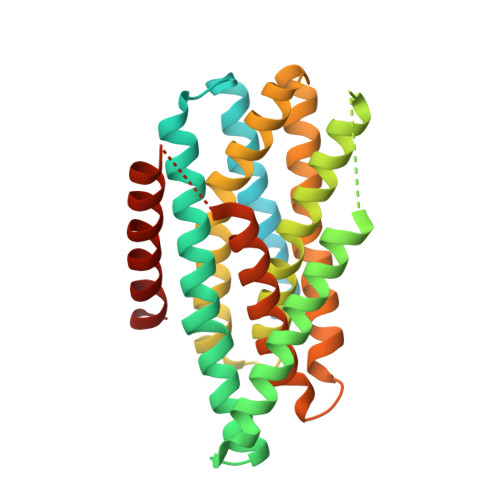Asymmetric functions of a binuclear metal center within the transport pathway of a human zinc transporter ZIP4.
Zhang, T., Sui, D., Zhang, C., Cole, L., Hu, J.(2020) FASEB J 34: 237-247
- PubMed: 31914589
- DOI: https://doi.org/10.1096/fj.201902043R
- Primary Citation of Related Structures:
6PGI - PubMed Abstract:
Metal clusters are exploited by numerous metalloenzymes for catalysis, but it is not common to utilize a metal cluster for substrate transport across membrane. The recent crystal structure of a prototypic Zrt-/Irt-like protein (ZIP) metal transporter from Bordetella bronchiseptica (BbZIP) revealed an unprecedented binuclear metal center (BMC) within the transport pathway. Here, through a combination of bioinformatics, biochemical and structural approaches, we concluded that the two physically associated metal-binding sites in the BMC of human ZIP4 (hZIP4) zinc transporter exert different functions: one conserved transition metal-binding site acts as the transport site essential for activity, whereas the variable metal-binding site is required for hZIP4's optimal activity presumably by serving as a secondary transport site and modulating the properties of the primary transport site. Sequential soaking experiments on BbZIP crystals clarified the process of metal release from the BMC to the bulky solvent. This work provides important insights into the transport mechanism of the ZIPs broadly involved in transition metal homeostasis and signaling, and also a paradigm on a novel function of metal cluster in metalloproteins.
Organizational Affiliation:
Department of Biochemistry and Molecular Biology, Michigan State University, East Lansing, MI, USA.















